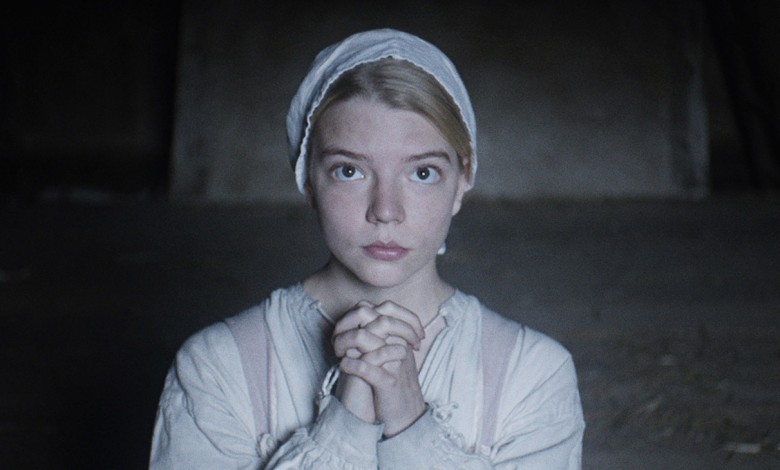From ‘Wednesday’ to ‘Weapons,’ Hollywood Enters a Season of the Witch for the Trump Age

Vampires and zombies took a big bite out of the horror box office in Sinners and 28 Years Later, and with Del Toro’s Frankenstein hitting theaters next week, it would seem that a return to classic marquee monsters is one of the stories of this summer’s movie season. But there’s one old-school hobgoblin that’s lurking around the edges of this narrative, omnipresent, repeated across a number of notable new titles, but still somehow avoiding the limelight: the witch. In one week alone this month, Wednesday returned to Netflix for a second season, Zach Cregger’s Weapons shocked audiences with a scene-stealing sorceress, and Chuck Russell’s remake of Witchboard swapped out the original’s malefic warlock for a new, far more dangerous witch. The Philippous’ Bring Her Back also hinged on a shadowy occult group, whose dark reincarnation spells drive a grieving mother to witchcraft and child abuse.
Witches have been an unshakeable fixture in the horror landscape of the past decade or so. In 2013, CNN observed that, suddenly, “Hollywood now can’t seem to get enough of witches.” After the genre-shaping success of The Witch three years later, the influence of A24’s raft of so-called “elevated horror” films made this archetype a staple throughout the decade, with titles like Hereditary, Suspiria and even Richard Stanley’s Color Out of Space. In my new book, That Very Witch: Fear, Feminism, and the American Witch Film, I make the argument that “cycles” of witch horror on screen have always coincided with periods of heightened feminist activism and visibility, and that this figure serves as an excellent bellwether for the state of women in our culture. Witches have always been a stand-in for fears around women’s power and influence, starting with the Medieval Catholic church’s invective against women who transgress their traditional roles as wives and mothers, from midwives and herbalists to women young and old who have sex out of wedlock, leading to mass hysteria and femicide.
Feminists since the 19th century have taken this figure up as a badge of honor and resistance in pamphlets, cartoons and protest actions, and this fact has been evoked in cycles of witch horror ever since. The Second Wave feminism of the ‘60s, borne alongside the so-called “Occult Revival”— a renewed interest in New Age spirituality that dominated discourse and tinged the counterculture with astrology, the zodiac and Ouija boards — brought us films like Rosemary’s Baby and George Romero’s underrated Season of the Witch. The anger and frustration of the Third Wave feminists of the ‘90s (themselves tied to what some called the “teen witch phenomenon” at the time) were reflected in the pissed-off punk rock covens of The Craft and shows like Charmed. It’s no surprise, then, that as feminism gained traction in the 2010s (the birth of the #MeToo movement, the Women’s March, and the influx of women running for office in 2017 alone spurred The Washington Post to declare it “the second year of the woman,” after 1992) alongside a notable spike in New Age belief (a 2014 Pew poll found that the number of practicing American Pagans and Wiccans surging and it became commonplace to find activists hexing the likes of Brock Turner and Brett Kavanaugh), witches also rose to pop cultural prominence. These witches were described in overtly feminist terms (The Witch was “wildly feminist,” according to Wired) celebrated by many women audience members as reflections of feminine rage, expressions of a desire to burn down the patriarchy.
But cinema, like politics, operates cyclically. As the liberalism of the ‘60s was slowly supplanted by the conservative paranoia and disillusionment of the ‘70s, depictions of witches started to lose potency, eventually finding themselves a source of comedy and pacification even ostensibly empowering films like The Witches of Eastwick during the anti-feminist backlash and Satanic Panic of the Reagan era. By the 2020s, QAnon and other religiously tinged conspiracies had reinstated the anti-supernaturalist fervor of the ‘80s and the cinematic witches of the 2010s seemed to have oversaturated the market. One meta-documentary exploring the feminist valence of the witch drew a bored review in this publication, which called Elizabeth Sankey’s Witches “trivial” and arguing that the director “unravels witch tropes we’ve all heard unraveled many times before” — in other words, feminist witches were old news.
It wasn’t just Witches that received this reception, though, and oversaturation is only half of the story. As in the 1970s, the political climate has undergone an epochal shift since 2020. Long gone is the fervor of the Women’s March or the tidal wave of civil rights activism that followed during lockdown, supplanted by anxious discussions about the Schlaffley-ite influence of Tradwives and MAHA moms as women are instructed by the Trump administration to re-embrace the “traditional family” and leave the workforce. As in that decade, when the Occult Revival was such a familiar element of American culture that films like The Exorcist could toss out lines about “secret witch cults” during cocktail parties and have viewers understand exactly to what they were referring, witches have been absorbed into the supernatural horror subgenre writ large, haunting the margins of films like Bring Her Back and Longlegs where the word is never used, but the reference point is clear. These witches, unlike the likes of Thomasin in The Witch, aren’t the kind you root for — they’re the kind that endanger your family. Witches have been used as an anti-feminist symbol for far longer than the feminist movement has existed, deployed as a yardstick for good feminine behavior and to scare naughty children back to bed lest they be gobbled up whole — or turned to soulless demons as with the missing third graders of Weapons.
It’s early in the decade yet. As historians will tell you, “the ’60s” didn’t end in 1970, and the neon-and-nostalgia soaked ‘80s that we recognize today didn’t truly begin until around 1984 with films like Back to the Future and Ghostbusters. One woman I spoke to during my book tour this summer complained that Stranger Things, another Satanic Panic infused piece of our pop culture, ignored the fact that many people’s memories of that decade were more associated with ‘70s-ish “wood paneling, saltines and smooth peanut butter” than arcade games and hair metal. The witch is still a feminist symbol: This week, Florence and the Machine released a new music video for the single “Everybody Scream” that draws on the feminist aesthetics of the 2010s far more than the supernatural scare tactics of films like Talk to Me, and the girl power ethos of Wicked is still one of the more obvious examples of the character in today’s culture. Yet, as this summer’s raft of witch horror films demonstrates, the witch’s significance in our current climate has obviously changed tone, signalling the radical conservative realignment that’s in the process of restructuring our entire cultural landscape. Long gone are the triumphant final moments of The Witch when a young oppressed woman floats into the air to join her coven around the bonfire, laughing with abandon. If we keep going down this political path long enough as a nation, don’t be surprised to go to the movies and find a witch being burned at the stake once more.
Source: Hollywoodreporter
HiCelebNews online magazine publishes interesting content every day in the celebrity section of the entertainment category. Follow us to read the latest news.
Related Posts
- Why Sling TV’s NFL Season Pass Is the Best Streaming Deal for Football Fans Right Now
- Hollywood Flashback: ‘Battle of the Network Stars’ Turned Celebs Into Gladiators
- Lil Nas X Charged With Battery Against Police Officer After Arrest
- ‘American Idol’ Judges Luke Bryan, Carrie Underwood, Lionel Richie Re-Sign for 2026 Season
- ‘The Last Sunrise’ Movie: Andrés Velencoso, Chloé Sweetlove Join Amazon MGM Adaptation (Exclusive)





